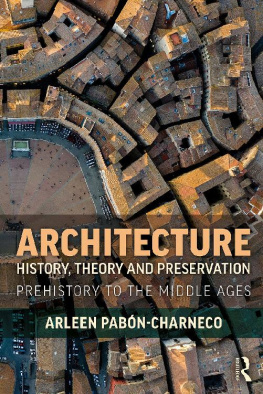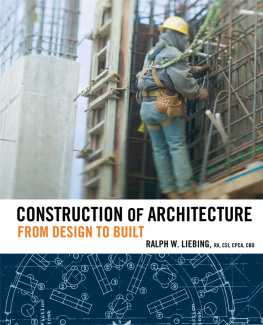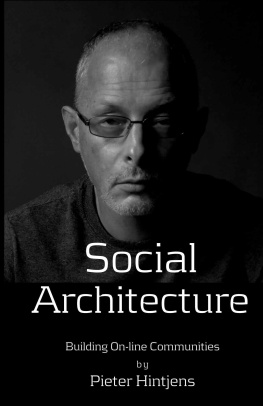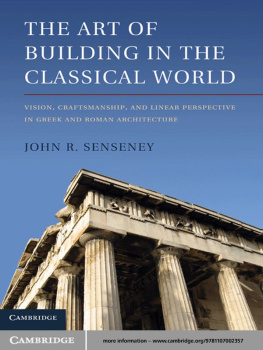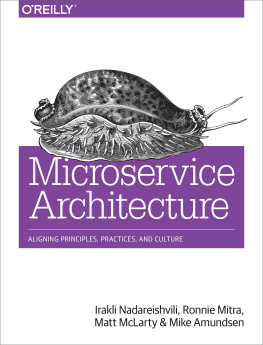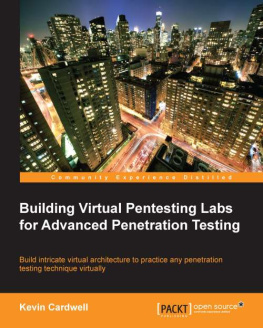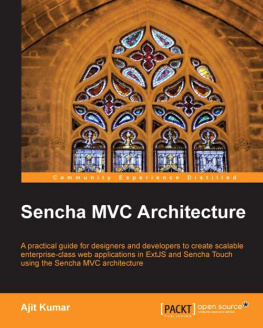refabricating
ARCHITECTURE
refabricating
ARCHITECTURE


Copyright 2004 by the McGraw-Hill Companies, Inc. All rights reserved. Except as permitted under the United States Copyright Act of 1976, no part of this publication may be reproduced or distributed in any form or by any means, or stored in a database or retrieval system, without the prior written permission of the publisher.
ISBN: 978-0-07-170908-8
MHID: 0-07-170908-8
The material in this eBook also appears in the print version of this title: ISBN: 978-0-07-143321-1, MHID: 0-07-143321-X
All trademarks are trademarks of their respective owners. Rather than put a trademark symbol after every occurrence of a trademarked name, we use names in an editorial fashion only, and to the benefit of the trademark owner, with no intention of infringement of the trademark. Where such designations appear in this book, they have been printed with initial caps.
McGraw-Hill eBooks are available at special quantity discounts to use as premiums and sales promotions, or for use in corporate training programs. To contact a representative please e-mail us at bulksales@mcgraw-hill.com.
TERM OF USE
This is a copyrighted work and The McGraw-Hill Companies, Inc. (McGraw-Hill) and its licensors reserve all rights in and to the work. Use of this work is subject to these terms. Except as permitted under the Copyright Act of 1976 and the right to store and retrieve one copy of the work, you may not decompile, disassemble, reverse engineer, reproduce, modify, create derivative works based upon, transmit, distribute, disseminate, sell, publish or sublicense the work or any part of it without McGraw-Hills prior consent. You may use the work for your own noncommercial and personal use; any other use of the work is strictly prohibited. Your right to use the work may be terminated if you fail to comply with these terms.
THE WORK IS PROVIDED AS IS. McGRAW-HILL AND ITS LICENSORS MAKE NO GUARANTEES OR WARRANTIES AS TO THE ACCURACY, ADEQUACY OR COMPLETENESS OF OR RESULTS TO BE OBTAINED FROM USING THE WORK, INCLUDING ANY INFORMATION THAT CAN BE ACCESSED THROUGH THE WORK VIA HYPERLINK OR OTHERWISE, AND EXPRESSLY DISCLAIM ANY WARRANTY, EXPRESS OR IMPLIED, INCLUDING BUT NOT LIMITED TO IMPLIED WARRANTIES OF MERCHANTABILITY OR FITNESS FOR A PARTICULAR PURPOSE. McGraw-Hill and its licensors do not warrant or guarantee that the functions contained in the work will meet your requirements or that its operation will be uninterrupted or error free. Neither McGraw-Hill nor its licensors shall be liable to you or anyone else for any inaccuracy, error or omission, regardless of cause, in the work or for any damages resulting therefrom. McGraw-Hill has no responsibility for the content of any information accessed through the work. Under no circumstances shall McGraw-Hill and/or its licensors be liable for any indirect, incidental, special, punitive, consequential or similar damages that result from the use of or inability to use the work, even if any of them has been advised of the possibility of such damages. This limitation of liability shall apply to any claim or cause whatsoever whether such claim or cause arises in contract, tort or otherwise.
For Barbara, Christopher, Caitlin and,
Marguerite, Harrison and Veronica
CONTENTS
ACKNOWLEDGMENTS
A book of this nature is not the work of the authors alone. Research on the concepts behind refabricating Architecture began within our University of Pennsylvania Master of Architecture Research Laboratory. The many students that we have had during the past four years have contributed to the opportunities presented by the challenges this book addresses. We extend our thanks for their insight and hard work. Dean Gary Hack and Richard Wesley, the former Chair of the Department of Architecture within the School of Design, have substantially supported the work in our laboratory. It has enabled doors to be opened anew and innovative walls to be constructed involving technologies seen and unseen.
The College of Fellows of the American Institute of Architects awarded us the inaugural Benjamin Latrobe Research Fellowship in 2001 for a proposal which has become this book. We are grateful to the College and their first jury of Harold Roth, Cesar Pelli, Harry Cobb, Harrison Fraker, and Charles Redmon for their faith in the promise of the proposal and our work. From that initial grant we were able to incorporate a research agenda into our office. At this writing this agenda has shown results with four architects dedicated to research topics ranging from off-site fabrications to innovative wall assemblies and interior components employing new ways of assembly and materiality.
Our research has taken us to near and far places. In Ridley, Pennsylvania and Everett, Washington we were given extensive time and tours of Boeing assembly plants. Bob Young and Tom Strevey were our hosts and guides. They have been immensely helpful to us with additional materials, images, and information. Similarly, in Detroit, Paul Kleppert and Ray Shashaani at DaimlerChrysler initiated us into the moments of process engineering. They sent us to Toledo, Ohio; we met with Ted Roberts and toured the DCX Jeep Liberty and Wrangler plants. These are plants where new and old world manufacturing exist side-by-side. Distant were memories of the 1960s tours of the River Rouge plant which loomed large in the comparative thoughts we took away from our tour. Vince Brooks, Design Chief at Delphi Systems in Troy, Michigan, has provided ongoing insight into how the automotive industry has turned its world upside down in the past decade. In Philadelphia, we have twice visited the Kvaerner Philadelphia shipyard, a new technology yard where the first container ship built on the East Coast of the United States in nearly four decades is nearing completion. Jennifer Whitener led us through tours of their innovative operation, answered questions, and supplied images. We could not have tested our theory without having access to these corporations.
There are individuals who have provoked us with their thoughts and the opportunities that they saw in our thesis. They have each caused us to think differently about our different thinking. These include James Becker of Skanska USA, Dave Richards of Arup, Norbert Young of McGraw-Hill, Sara Hart and Charles Linn of Architectural Record, and Marc Zobec of Permasteelisa. Collective intelligence is good.
We have a wonderful group of collaborators near us in Philadelphia. Our office. No more creative and energetic place exists. Without the dedication of our staff on a daily basis these ideas would remain dormant: unwritten, unsaid, unenacted. Jonathan Fallet began the work. No one has done more than Richard Seltenrich in working at and on the ideas of the book, crafting imagery, extending the potential and provoking further thought. Sarah Williams has, off-site refabricated our words into proper text. Karl Wallick, an invaluable collaborator and contributor, has worked with us closely since participating in the initial research studio four years ago. His contributions may be seen woven into the workings of all the research studios, in the crafting of SmartWrap at the Cooper Hewitt Museum, and in the words and images of this book. He has been pivotal in the execution and extension of our research and practice agenda into refabricating Architecture.
Next page

